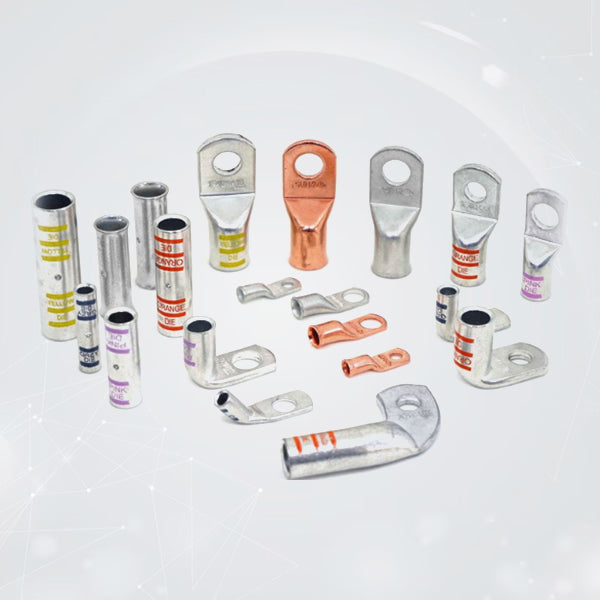
How to Prevent Overheating and Voltage Drop in 4 AWG Wire Lugs
If you’re working with power systems, whether it’s an RV upgrade, a solar battery bank, or even a high-output car audio setup, you already know 4 gauge wire lugs are a popular go-to. It’s thick enough to carry some serious current, but still flexible enough to work with in most DIY setups.
Now, here’s the thing most people miss: even if you’ve got the right cable, none of that matters if the lug connection fails. Heat, voltage drop, corrosion, all of that often comes down to the smallest piece in your setup: the lug.
In this blog, we’re going to talk about how to prevent two of the most common problems when using 4 AWG wire lugs, overheating and voltage drop, and how to make sure your connections stay safe, solid, and long-lasting.
What Is A 4 AWG Lug?
A 4 AWG lug (also called a 4 AWG terminal lug) is a heavy-duty copper connector designed to terminate 4 gauge copper wire. You crimp it onto the bare wire, bolt it to your connection point, like a battery post, fuse block, or ground bar, and it becomes the bridge between your cable and your component.
It sounds simple, but this little piece of copper has a big job. If it’s not installed right or if the lug itself is of poor quality, things can go south fast.
What Causes Overheating In 4 AWG Wire Lugs?
Overheating in 4 gauge wire lugs usually comes down to one of three things:
1. Bad Crimps
If the crimp is loose, off-center, or done with the wrong tool, it creates resistance. Resistance creates heat. Heat causes copper to oxidize and expand. Before you know it, your connection is cooked, or worse, melted.
Fix: Use a proper crimping tool rated for 4 AWG lugs. Don’t guess, the connection should be tight enough that the wire can’t move inside the barrel.
2. Undersized or Cheap Lugs
Not all lugs are created equal. Thin metal, poor copper quality, or the wrong barrel size means more resistance. More resistance? You guessed it, more heat.
Fix: Stick with UL-listed, high-conductivity copper lugs. Like the ones we make at Selterm. They’re built to handle real-world current loads without heating up under pressure.
3. Corrosion at the Contact Point
Especially in marine or outdoor installs, corrosion at the lug-to-terminal connection can ruin conductivity and spike resistance.
Fix: Use tinned lugs for high-exposure installs. For bare copper lugs, always seal with heat shrink and check periodically for oxidation.
What Causes Voltage Drop In 4 AWG Terminal Lugs?
Voltage drop is basically a quiet power killer. It sneaks up in long cable runs, high-amp circuits, or poorly connected terminals. Here’s how to stop it at the source:
1. Make Sure the Wire Is Fully Inserted
A half-inserted wire means half the contact. That creates a bottleneck and lowers the effective gauge at the connection point.
Tip: Push the wire all the way into the barrel before crimping. You should feel it bottom out; if not, trim and reinsert.
2. Check for Stud and Lug Mismatch
If your lug’s hole doesn’t match your bolt or terminal properly, the contact area shrinks. That reduced surface area can drop your voltage under load.
Tip: Match your lug’s stud size to the terminal. Selterm offers 4 AWG lugs in multiple stud sizes so you can get a snug, proper fit.
3. Use the Right Wire Length
If you’re running a long stretch of cable with just one lug on each end, voltage drop can add up, especially under heavy load.
Tip: If possible, keep cable runs short. And for longer distances, always measure for voltage drop using the full path, not just one leg.
Pro Tips To Maximize Performance With 4 Gauge Wire Lugs
- Pre-tin your stranded copper wire if you're in high-moisture zones (optional, but useful)
- Use adhesive-lined heat shrink to keep water and debris out of the crimp
- Torque your connection properly, don’t overtighten or strip threads
- Keep extra lugs in your kit in case one gets damaged during installation
- Inspect connections seasonally in outdoor or off-grid systems
Why Selterm 4 AWG Lugs Make A Difference
At Selterm, our 4 AWG terminal lugs are made from 99.9% pure, high-conductivity copper, precision-machined, and UL and CUL listed for safety and reliability. Each lug is built to handle serious current and harsh environments, whether you're building a solar rig, upgrading a boat, or just wiring your trailer batteries right the first time.
Our lugs are:
- Smooth, chamfered for easy wire insertion
- Offered in multiple stud sizes for a perfect fit
- Compatible with most industry-standard crimping tools
- Available in bare or tinned variants, depending on your needs
Final Thoughts
When you're working with power, the weakest connection is always the risk point. Overheating and voltage drop aren’t just technical issues; they’re warnings that something’s not right. And most of the time, it starts at the lug.
Whether you’re a weekend DIYer or an installer who does this every day, getting your 4 AWG wire lugs right is one of those small steps that can make or break the project.
With the right tools, proper installation, and quality lugs from Selterm, you’re not just protecting your circuit; you’re protecting everything it powers.

